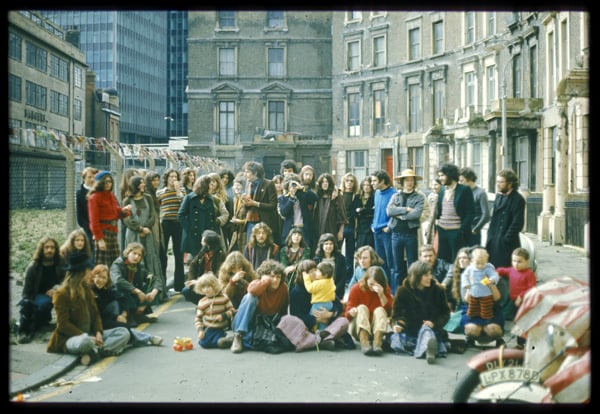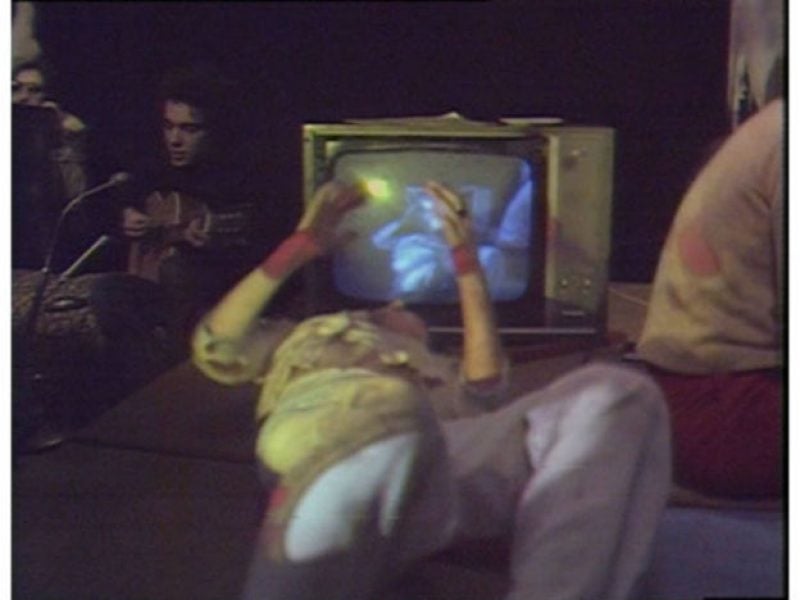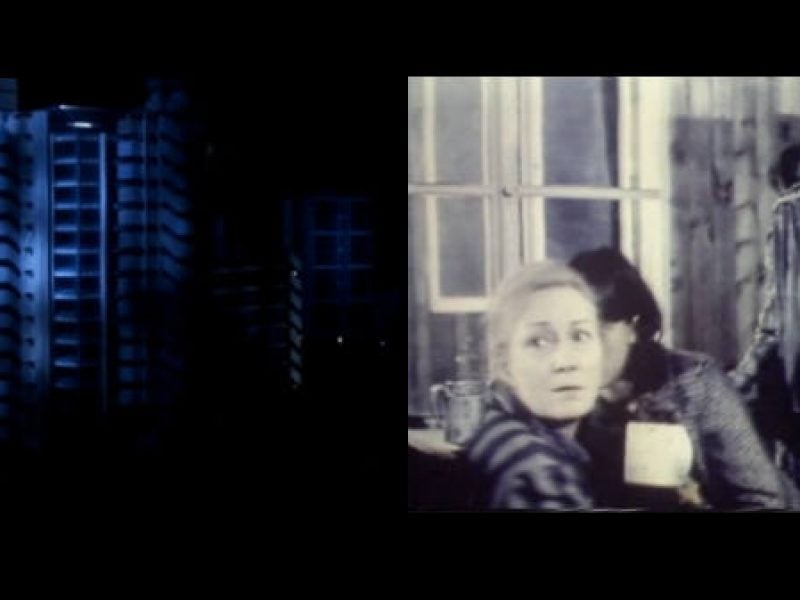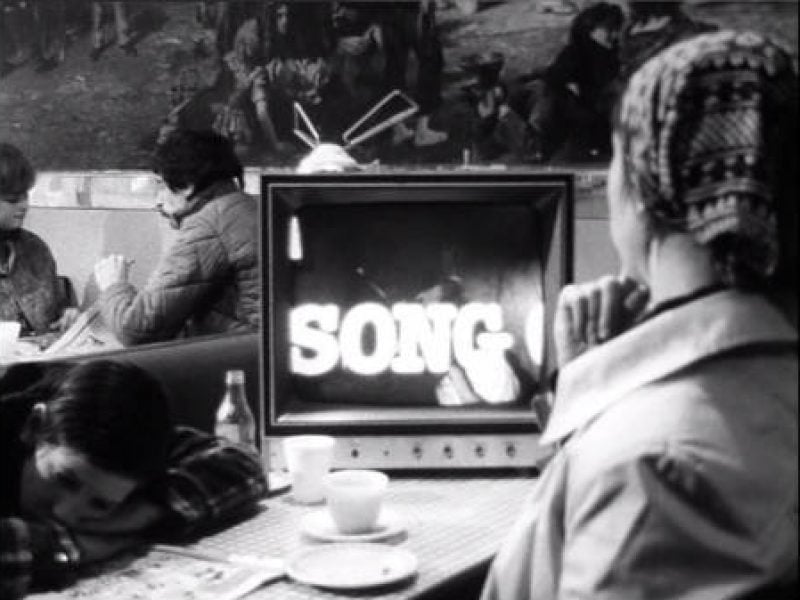Titling anthologies or exhibitions, especially those that range over contested territory, is a tricky business. When settling on Goodbye to London: Radical Art & Politics in the ’70s editor Astrid Proll must have felt that with this she had a title that straightforwardly registered the balance between timely social history and personal recollection that the texts in the book would strike. As it turns out the book tends towards nostalgia, as indicated by the first part of the title, and veers away from satisfactory survey, as promised by the second. Questions about the relationship between the artistic practices of then and now; the legacy of political and social movements of the decade, or the relation of artistic practices to these movements; and the aesthetic consequences of neoliberal policies, all go unanswered.
The book is composed of a short introduction by Proll, a photo-essay by Jon Savage, personal recollections about the squatting culture and gay rights movement provided by Sacha Craddock and Peter Cross respectively, an essay about the Grunwick Strike by Homer Sykes, and a contextual essay by Andrew Wilson with the unwieldy title, Art: Politics / Theory: Practice. The book was published in conjunction with an exhibition of the same name that took place last summer at Neue Gesellschaft fur Bildende Kunst, Berlin, so there are also images of works that were included in the exhibition by Stuart Brisley, Margaret Harrison, Peter Kennard, Jo Spence, Marc Karlin and Derek Jarman.
Proll’s sketchily remembered years in London cover a period of personal development and acclimatisation. She fled Germany in the early Seventies – as member of the Red Army Faction (Baader-Meinhof Group) she was on the run from the German authorities. She kept a low profile from 1974 to 1978, but was then discovered and interned in Brixton Prison for a year before being extradited to Germany. For her the “English Left” was more pragmatic, less likely to “lose themselves in theories” than their German counterparts, and as a group more together, less fragmented.
The picture of London she paints: of squats being hotbeds of political activism, art and alternative lifestyles, runs the risk of self parody – whilst reading Proll’s introduction Doris Lessing’s early eighties satire, The Good Terrorist, was never far from my mind. Proll’s crude characterisations of the time don’t constitute anything like a satisfactory social history, but do reveal something of her own personal development: the women’s movement was a time when the idea of men as romantic partners was jettisoned, ‘they felt they had more in common with women than men’.
Savage’s photographs of West London – specifically the area around Lancaster Road and the Westway – taken in 77 are alternately dull and menacing. There are bits of graffiti here and there, and derelict buildings, but most of all there is space. As much as the degradation, Savage meant to show this space, pregnant with possibility. What he calls in his short essay, “an interzone waiting for something to happen, for the beasts to be unleashed”. Savage writes of London’s cycles of boom and bust, and of the built environment’s arrested development – the “rampant and insensitive development” of the sixties and early seventies left to rot – but his strength is in uncovering the youth cultures that emerged at this time.
For him Margaret Thatcher’s government’s victory in the general election of May 1979 sounded the death knell for “alternative” London – this brief period when anything was possible because all was lost. What Savage’s take on this period lacks in nuance and rigour it makes up for in striking imagery and a pithy turn of phrase, much like the punk and post-punk music that he has so thoroughly chronicled elsewhere.
Despite recent exhibitions in London such as The Secret Public: Last Days of the British Underground 1978-1988 at the ICA and Panic Attack: Art in the Punk Years at the Barbican (both, 2007), the history of British art in the 70s is still in some sense to be written, and art’s brush with politics at this time, still little understood.
Goodbye to London, for all its shortcomings does at least lay the foundations for the work that needs to be done, and highlights the events that impacted on a generation of artists largely absent from histories of recent British art. Other books such as Framing Feminism (edited by Rozsika Parker and Griselda Pollock), Left Shift: Radical Art in 1970s Britain by John A. Walker and Margaret Dickinson’s excellent Rouge Reels: Oppositional Film in Britain, 1945 – 90, are more rigorously researched if just as partial. With the growing interest in the art and politics of this much maligned of decades this list is sure to grow.
Dan Kidner is a writer and curator, and the Director of City Projects







